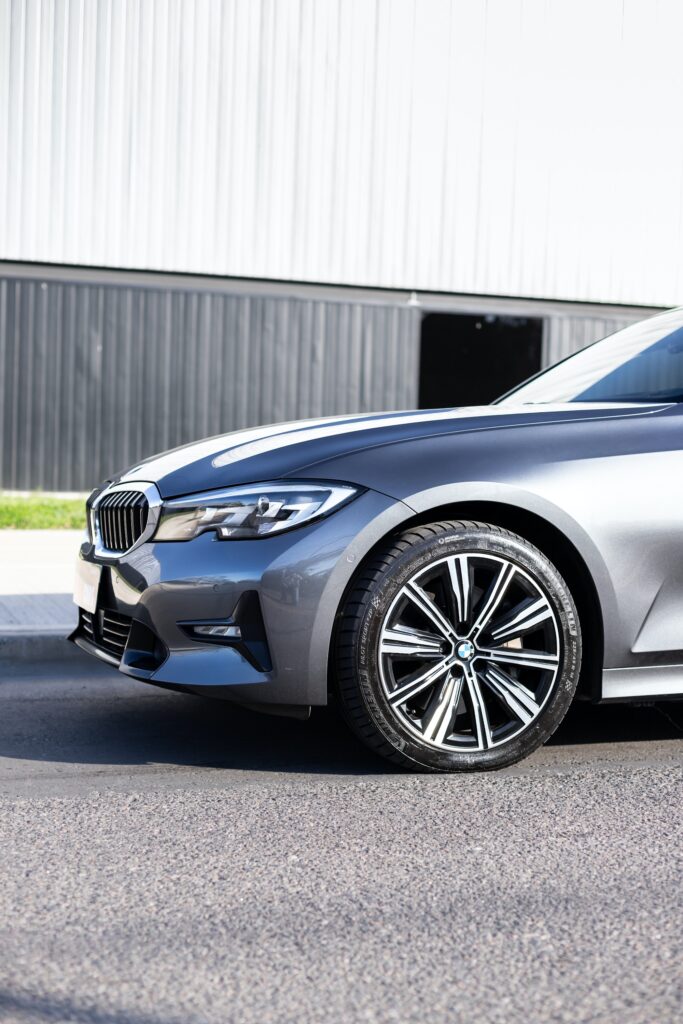BMW X5 Tire Pressure | How To Check The Recommended Psi?
In this article, we will help you learn about the ideal BMW X5 tire pressure for your tires. Last week, while trying to start my BMW X5, I realized I got a flat tire. The thing about X5s is that it’s difficult to assess the tire pressure level simply by looking at it. Being an SUV, the tires are much larger and thicker compared to any normal-class sedan. That led me to the question, what is the ideal tire pressure?
The BMW X5 ideally should have a front tire pressure of 32 psi and a rear tire pressure of 36 psi. This is the ideal recommended limit by BMW. But what if you’re carrying a load? Or using an older model?
Read along to find out what’s the ideal tire pressure for your X5.
Contents
How to Check for Tire Pressure on the BMW X5?
If you own a BMW X5, which is 2007 or later, chances are that your X5 has a TPMS or Tire Pressure Monitoring System installed.
With the TPMS, you can easily check for the tire pressure from the dashboard without having to manually labor it out.
But if you do own a pre-2007 model, here’s how you can check the tire pressure.
- Remove the valve stem cap.
- Firmly position the tire pressure gauge on the stem cap.
- Check the reading on the pressure gauge. If it is between 32 psi and 36 psi, then you are all good.
- In case of imbalance, check whether it is under or over. In case there is more tire pressure, simply press the center switch on the valve stem. This will let out some air. In case of under, add more air and check again.
- Finally, remove the pressure gauge and firmly position the cap back again.
Read Also>>Why BMW Battery Discharged While Stopped? (Cause & Fix)
Read Also>>BMW Timing Chain Replacement Cost & Guide (Explained)

Recommended BMW X5 Tire Pressure
Now, let us look at the tire pressure of different X5 models. For ease of navigation, I have broken down the list into the generational release. As a result, I will be covering the list starting from the first to the latest fourth generation.
First Generation: E53 X5
The first generation of the X5 ran from 1999 to 2006, with a major facelift in 2004. Here is a list of front and rear tire pressure.
| Year | Tire Size | Front (PSI) | Rear (PSI) |
| 2000 | F: 255/50R19R: 285/45R19 | 32 | 32 |
| 2001 | F: 255/55/R18 H 105R: 255/55/R18 H 105 | 32 | 32 |
| 2002 | F: 255/55/R18 H 105R: 255/55/R18 H 105 | 32 | 32 |
| 2003 | F: 255/55/R18 H 105R:255/55/R18 H 105 | 32 | 32 |
| 2004 | F: 255/55/R18 H 105R: 255/55/R18 H 105 | 32 | 32 |
| 2005 | F: 255/50R19 103VR: 285/45R19 107V | 32 | 32 |
| 2006 | F: 255/50R19 103V R:285/45R19 107V | 32 | 32 |
Second Generation: E70 X5
The second generation of the X5 was in production from 2007 to 2013. There were no major changes in the standard line while in production.
| Year | Tire Size | Front (PSI) | Rear (PSI) |
| 2007 | F: 255/50R19 107V XLR: 285/45R19 111V XL | 32-38 | 32-41 |
| 2008 | F: 255/50R19 107V XLR: 285/45R19 111V XL | 32-38 | 32-41 |
| 2009 | F: 255/50R19 107V XLR: 285/45R19 111V XL | 32-38 | 32-41 |
| 2010 | F: 255/50R19 107V XLR: 285/45R19 111V XL | 32-38 | 32-41 |
| 2011 | F: 275/40R20/XL 106YR: 315/35R20/XL 110Y | 33 | 33 |
| 2012 | F: 275/40R20/XL 106YR: 315/35R20/XL 110Y | 33 | 33 |
| 2013 | F: 275/40R20/XL 106YR: 315/35R20/XL 110Y | 33 | 33 |
Third Generation: F15/F85 X5
The third generation of the X5 ran from 2014 to 2018. There was also no major overhaul during this time with the most significant changes being the introduction of three engine configuration choices.
| Year | Tire Size | Front (PSI) | Rear (PSI) |
| 2014 | F: 275/40R20/XL 106WR: 315/35R20/XL 110W | 33 | 35-36 |
| 2015 | F: 285/40R20 104YR: 325/35R20 108Y | 38 | 38 |
| 2016 | F: 285/40R20 104YR: 325/35R20 108Y | 36 | 36 |
| 2017 | F: 285/40R20 104YR: 325/35R20 108Y | 36 | 36 |
| 2018 | F: 285/40R20 104YR: 325/35R20 108Y | 36 | 36 |
Fourth Generation: G05/G18 X5
The fourth generation is the latest and the current lineup of X50. It has the highest configuration and variants among any existing lineup from BMW. For the sake of relevance, the focus would stay on the standard model.
| Year | Tire Size | Front (PSI) | Rear (PSI) |
| 2019 | F: 275/40R21/XL 107YR: 315/35R21/XL 111Y | 35 | 42 |
| 2020 | F: 295/35R21/XL 107YR: 315/30R22/XL 107Y | 36 | 39 |
| 2021 | F: 295/35R21/XL 107(Y)R: 315/30R22/XL 107(Y) | 36 | 39 |
| 2022 | F: 275/40R21/XL 107YR: 315/35R21/XL 111Y | 35-38 | 42-44 |
Read Also>>Everything to Know About The BMW Dynamic Cruise Control
Read Also>>How To Fix Chassis Stabilization BMW? (Full Guide)
Frequently Asked Questions
Now that you probably know the ideal tire pressure of your X5, let’s look at some of the frequently asked questions regarding the same.
How Often Should You Check Tire Pressure?
It is ideally suggested to check tire pressure every two weeks. Additionally, you should check the tire pressure before going on trips and long drives.
How Long Does A BMW X5 Tire Last?
A BMW X5 tire should last you about 6 years generally. It can last even more if you take good care of the tire. Follow proper rules of tire maintenance and check for outer wear and tear to see whether you need a replacement or not.
Can I Get TPMS On An Older X5?
The Tire Pressure Monitoring System is available for all X5 models introduced after 2007. Any older BMW X5 doesn’t have the TPMS and unfortunately, you cannot install the TPMS manually.
Can I Drive With Overpressure On The X5?
Well technically you can drive with a slight overpressure on the car but it is not recommended. A higher tire pressure would make the tire more prone to wear and tear over time. It may also cause puncture-related accidents while driving at high speed or over bumps.
Read Also>>7 Causes & Fix For BMW X3 Drivetrain Malfunction
Conclusion
The BMW X5 revolutionized the compact SUV segment since its inception back in 1999. It has been the perfect family car for many and a sheer joy to drive.
Being an SUV, the X5 has a higher wheelbase and tire size. These larger tires require more precision care, especially with pressure.
The tire care procedures have been outlined in detail on the BMW manual itself. With weekly checks, make sure that the tire pressure is within the optimum level for long and durable usage.

